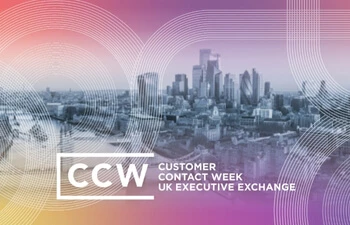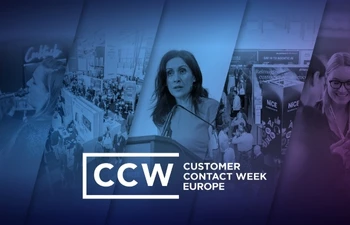Customer journey analytics: A guide to analysing and improving customer journeys
Add bookmark
At a time when customer expectations are continuously evolving, there are two constants we can be certain of: their demands will continue to rise, and to remain ahead of the curve you need a deep understanding of the customer journey. That’s where customer journey analytics comes in.
What is customer journey analytics?
Firstly, it’s worth defining the difference between customer journey mapping and customer journey analytics.
Customer journey mapping is, as the name suggests, a visual representation of all the steps a customer takes when they interact with a company, from awareness — by seeing an advert for example, all the way through to purchasing a service or receiving a product. It relies on customer data, and is vital to understanding what a customer’s experience is like, including pain points and opportunities for improvement.
Take the example below from Rail Europe. Here the journey begins with customers researching destinations and itineraries, through to booking, receiving tickets, travelling, and sharing or reviewing the experience after the event. It enables customer experience managers to pinpoint where issues may occur, such as problems with booking, unexpected travel changes, and if a refund is requested.

Source: A customer journey map. Polaine, Løvlie, and Reason. 2013. Service Design: From Insight to Implementation. New York: Rosenfeld Media rosenfeldmedia.com/books/service-design (CC BY 2.0)
Customer journey analytics is the process of collecting, analysing and interpreting customer behaviour across the various touchpoints of the journey. This data-driven process collects information from multiple sources such as Customer relationship management (CRM) systems, websites, mobile apps, live chat and contact centers.
With the emergence of artificial intelligence (AI), machine learning (ML) and advanced analytics tools, customer experience managers can gain real-time insights into behaviours, and use these to create personalisation strategies — in other words, tailor their experiences to their customers.
Why customer journey analytics matters
The advantages of personalising experiences cannot be overstated, especially as customer expectations continue to rise. Consultant Annette Franz explains that these efforts increase customer satisfaction and loyalty, and recommends that companies, “Use the data to personalise product recommendations based on previous purchases coupled with product reviews that reinforce the trustworthiness of the recommendations.”
In our most recent State of Customer Management report, the majority of respondents (42 percent) said they are planning to invest in data unification / customer data platforms over the next year to enable them to build 360-degree views of their customers and their experience.
By integrating data gathered from customer interactions, organisations can create seamless and personalised customer experiences, anticipate customer needs, predict problems ahead of time, and proactively resolve these.
Let’s take a look at how.
How to analyse customer journeys step-by-step
To begin with, you need a clear strategy. Start by defining what your objectives are and ensuring these are aligned with business goals. Is the aim to increase customer retention, boost engagement, understand pain points or drive more sales?
- Map the customer journey: Outline key stages like awareness, consideration, purchase, and post-purchase. Identify common touchpoints (e.g., ads, website visits, support calls).
- Collect data: Make sure data is collected across all customer touchpoints. Use CRM systems, web analytics, customer feedback, support logs, and even social media to capture actual customer behaviour.
- Segment your audience: Break down journeys by customer type, behaviours like purchase history and web pages visited, or demographics to uncover patterns and differences across segments. Tools like Google Analytics and Adobe Analytics can do this for you — there is more on this below.
- Identify key metrics: Depending on what your objectives are, focus on metrics such as conversion rates, drop-off points, Net Promoter Score (NPS), and time spent at each stage.
- Analyse touchpoint performance: Look for friction points or drop-offs. Understand where customers are getting stuck or disengaging. Use tools like journey analytics dashboards, heatmaps, or funnel visualizations to bring insights to life.
- Take action: Last but certainly not least, use these insights to improve your customers’ experience, by optimising specific steps where you’ve identified issues, and personalising experiences.
It’s important to mention that you must abide by data privacy regulations like GDPR, to ensure you are compliant and to help build customer trust.
Customer journey analytics tools and what they do
To effectively analyse customer journeys you need the right mix of tools that capture data, provide insights, and support decision-making. Moreover, you need to capture different kinds of data from the various touchpoints your business has. Here are some essential additions for your toolkit:
Customer journey mapping tools
Visual mapping tools help you create customer journey maps, by outlining each stage of the journey, listing touchpoints, pain points, emotions, and opportunities. These will typically let you import data (from a spreadsheet, for instance) and generate a flowchart for you.
CRM systems
These are applications that centralise customer data and track interactions in one place, making data easy to access. Importantly, they can unify different kinds of data — for example information related to the bounce rate from your website or feedback from customers after a purchase or interaction. They can also support segmentation by behaviour, demographics or lifecycle stage.
Website analytics
Tools like Google Analytics track page visits, clicks and conversions, and can help you understand how long people are spending on your website, and where they are dropping off.
Behavioural analytics
Behavioural analytics tools go a step further by helping you uncover why users behave a certain way, and not just what they are doing. For example, heatmaps can give you a visual representation of the areas of a web page where users click, scroll and hover the most. Session recordings capture everything a user does in a session, including mouse movements, scrolls and page navigation. This can be useful to capture signs of frustration — for example if a user rapidly clicks the same area multiple times in a short time period it can mean a broken link or slow response time.
Advanced analytics
Advanced analytics tools can combine data from multiple sources and apply AI and ML to deliver real-time, personalised experiences. These can help you predict customer behaviour and recommend next actions.
For example, AI can quickly detect patterns, identify journey bottlenecks, and even analyse customer context and intent. Tools that leverage ML can analyse past interactions and use this to predict future behaviour, such as whether a customer is likely to abandon their cart. They can also help with journey orchestration — in other words, improve the customer journey. Take the example of a customer clicking multiple times in a short time span. A tool using ML can change the journey by providing helpful content in real-time, or escalating to a live agent, to prevent the user from dropping off.
Measuring success
You now have a strategy in place and the right tools, but how will you measure success? Depending on your objectives, these metrics can help you evaluate how satisfying customers’ journeys are:
Customer retention rate
This is the percentage of customers who continue to engage with the brand over time. You can calculate this on an annual, quarterly, monthly, or weekly basis, or in the case of very busy companies, daily. There is a formula to do this, where you will need to know how many new customers you’ve acquired during the time period you are measuring (N), and subtract this from the number of customers remaining at the end of this period (E). You then multiply this by 100 and divide this by the number of customers you had at the start (S).

Customer Satisfaction Score (CSAT)
This is the measure of how satisfied a customer is with a particular interaction, product, service, or their overall experience. It is typically collected through short surveys or feedback forms right after the customer interaction, asking simple questions for the customer to rate their satisfaction level.
Net Promoter Score (NPS)
This metric focuses on satisfaction and how likely the customer is to recommend your company, often measured by asking the customer to rate this likelihood on a scale of 1-10.
Conversion rate
The conversion rate looks at the percentage of customers who take a desired action, for example signing up to an event or newsletter, or purchasing a product. This can help you assess how efficient the different stages in the customer journey are.
Case study: How Lush went from storefronts to a scalable digital shopping space
Lush, a global brand known for its handmade, ethical beauty products, has successfully navigated the transition from high-street retail to a sophisticated digital experience.
Customer care is central to the company, ensuring that both online and offline interactions maintain the brand's signature personal touch. Teams receive extensive training on products to ensure consistency across all channels, with staff in the contact centre receiving exactly the same training as those working in-store.
Every conversation between agents and customers is recorded. Sonya Fanson, Global Customer Care Manager, explains that, “we tag and classify every single interaction our agents have with customers because we want to get granular with customer feedback. We run comprehensive reports and within days of something new going live, be it a product or service, we can adapt and pivot where necessary.”
“If there is a common problem or, on the contrary, we’re receiving great feedback we can go to the relevant teams and impart that information. And it can be simple stuff — maybe there’s an issue with a new bottle top, or maybe we need to tone down some colours, or maybe a new formula we’re trying isn’t resonating. Whatever it is, we can quickly remove products from the market, make changes, and get them back out on sale again. We wouldn't be able to do that without listening to our customers in the moment. It's great for us to have all this first-party data at our fingertips and for us to be able to share it.”
This is all tracked through Zendesk, which centralises information on customer interactions — whether through SMS, email or in-person — across the 21 countries Lush operates in. “Whenever a ticket is resolved, however it came in, be it through SMS or email, the customer will receive a survey at the end. We’ll ask them about satisfaction scores there.
This unified system allows agents from different locations to collaborate effectively, ensuring real-time problem-solving and knowledge-sharing. Behind the scenes, it helps to identify trends and improve the customer experience in real-time.
As a result, brand’s CSAT score sits above 90 percent, way above the industry average that typically hovers in the mid-70s. This case study demonstrates how Lush combines technology with personalised service to create an effective, customer-centric journey across both physical and digital touchpoints.
And finally…
Analysing customer journeys is not a one-off process but rather one of continuous monitoring and improvement. Use A/B testing to keep refining marketing campaigns, website experiences, and customer interactions based on feedback.
As we've explored in this guide, mastering customer journey analytics means blending strategy, data from multiple sources and technology — all in service of better customer experiences.






















